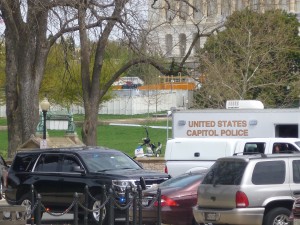Yesterday’s crash landing of a gyrocopter on the Capitol lawn again exposed security vulnerabilities in the area of the National Mall. The pilot, identified as Doug Hughes, claims to have flown his craft from Gettysburg, Pennsylvania, about 65 miles away. Upon his arrival in DC, he buzzed the White House and the National Mall before landing at the Capitol.
The FAA maintains rules that define the “DC Special Flight Rules Area” (SFRA), which regulates aircraft flying within a 60 mile radius of Reagan National Airport (DCA). The regulations, developed after 9/11, are designed primarily to protect against intentional attacks on the nation’s capital.
This incident reveals the limits of the technology that is in place to enforce these rules and defend the capital. A small aircraft such as Hughes’ gyrocopter (manned or not) flying at low altitude is nearly impossible to detect or to distinguish from a flock of birds by the radars of the FAA and military currently in place (that we know about). An aircraft of that scale could have easily delivered a bomb into the throngs attending the Cherry Blossom Festival in DC last weekend. Or the White House. Or the Capitol.
Much of the current media coverage is focusing on the regulations that were violated by the copter pilot and the possible criminal and civil penalties he will face. The existence of such penalties would not deter someone with bad intent, domestic or foreign, from taking advantage of this vulnerability. I hope that Congress and the mainstream (read powerful) media do not let the FAA, military, and Department of Homeland Security off the hook for this incident. The sight of Secretary of Homeland Security Jeh Johnson joking yesterday about his reaction to the news (“What’s a gyrocopter?”) is not comforting. If they currently have plans in place to defend against this type of attack, an investigation into the operational failure is required. If they do not, shame on them – the time to fix that is now.
 Thought Widget get learnt
Thought Widget get learnt




